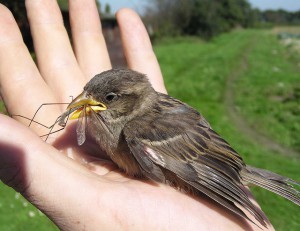Neonicotinoid use leads to decline in bird populations
Research has demonstrated that exposure to neonicotinoid pesticides is harmful to non-pest insects such as bees. Now, a new study published in the journal Nature demonstrates that the negative effects of these unintended exposures my reach much further up the food chain than scientists previously suspected. Researchers from Radboud University in the Netherlands demonstrated that bird populations declined in areas where surface water contained concentrations of the neonicotinoid pesticide imidacloprid at 20 nanograms per liter. These declines were observed even when habitat destruction due to changing land use was accounted for. The study also demonstrates insectivorous bird populations did not begin declining until the mid-1990s, when farmers in the region began using imidacloprid. The authors suggest that bird populations are not likely to be declining due to direct toxicity of the pesticide but in response to their declining food source—namely insects particularly sensitive to the chemical. Future pesticide regulation should take into account that more wildlife is at risk due to neonicotinoid use in conventional agriculture than was previously anticipated.




